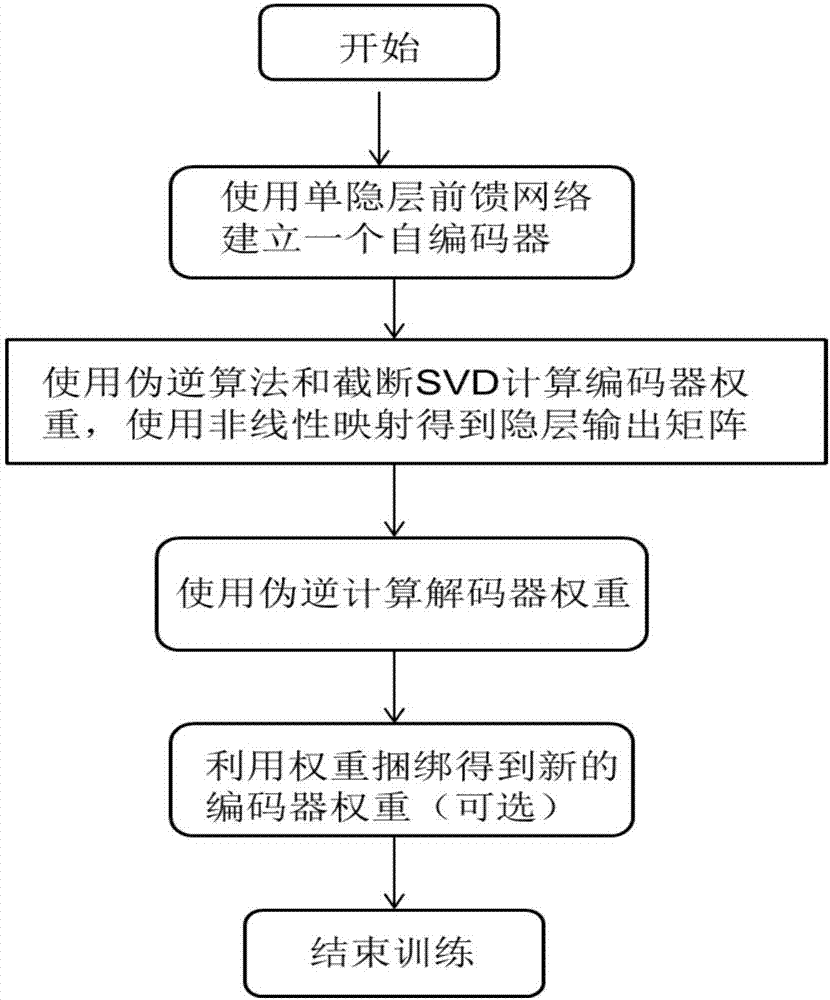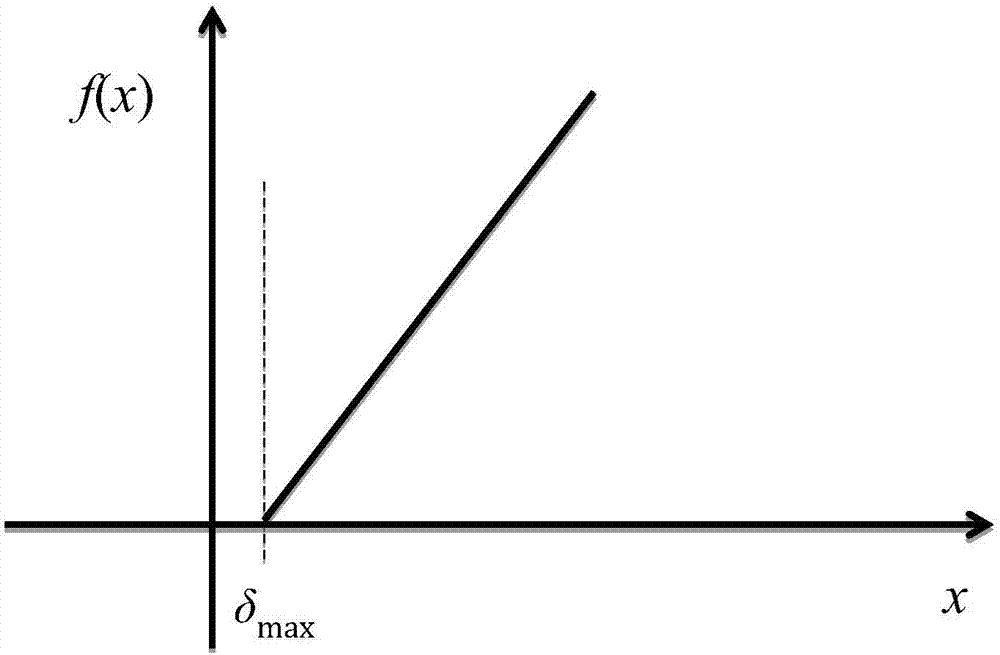Sparse self-encoder fast training method based on pseudo inverse learning
A sparse autoencoder and sparse autoencoder technology, applied in neural learning methods, neural architectures, biological neural network models, etc., can solve the problems of time-consuming training process, lack of theoretical basis, and inability to learn useful features, etc. The effect of reducing degrees of freedom and fast calculation speed
- Summary
- Abstract
- Description
- Claims
- Application Information
AI Technical Summary
Problems solved by technology
Method used
Image
Examples
Embodiment Construction
[0039] The present invention provides a method for quickly training sparse self-encoder networks in order to overcome the shortcomings of existing training algorithms for sparse self-encoder neural networks. In order to make the purpose, technical solutions and advantages of the present invention clearer, the following in conjunction with specific embodiments and appended figure 1 The method is described in further detail. It should be understood that the descriptions of specific embodiments here are only used to explain the present invention, and are not intended to limit the present invention.
[0040] Specifically, see figure 1 , is a flowchart of a method for quickly training a sparse autoencoder network according to an embodiment of the present invention. For the training sample set composed of N d-dimensional samples Expressed as a matrix X=[x 1 ,x 2 ,...,x N ],in represents the i-th training sample. The fast training method of the sparse autoencoder based on p...
PUM
 Login to View More
Login to View More Abstract
Description
Claims
Application Information
 Login to View More
Login to View More - R&D
- Intellectual Property
- Life Sciences
- Materials
- Tech Scout
- Unparalleled Data Quality
- Higher Quality Content
- 60% Fewer Hallucinations
Browse by: Latest US Patents, China's latest patents, Technical Efficacy Thesaurus, Application Domain, Technology Topic, Popular Technical Reports.
© 2025 PatSnap. All rights reserved.Legal|Privacy policy|Modern Slavery Act Transparency Statement|Sitemap|About US| Contact US: help@patsnap.com



